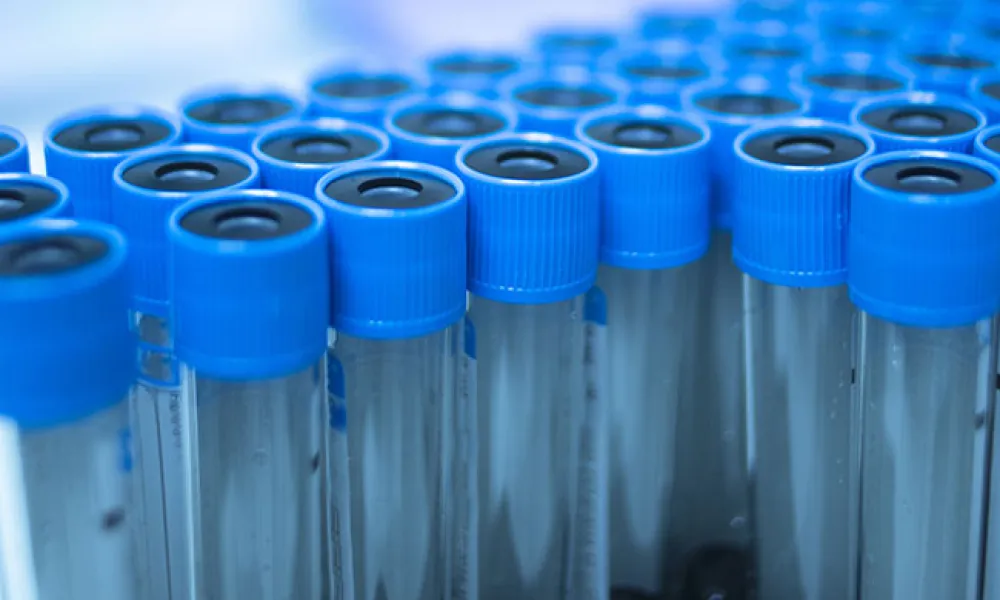Dr. Ty Jones is a sports medicine doctor at Proliance Orthopedic Associates. He has brought PRP (platelet-rich plasma) treatments to our Renton, Covington, and Maple Valley offices. Evidence has been amassing that PRP is a safe, minimally invasive and cost-effective way to reduce pain and improve function in active individuals with knee osteoarthritis. The treatment is a natural alternative, using the healing factors from the patient's own bloodstream.
HOW PRP WORKS
Platelets are present in our bloodstream along with white immune cells and red blood cells. When an injury occurs, platelets are activated and release growth factors and anti-inflammatory factors. Studies show that these factors prevent cartilage degeneration and decrease inflammation. We are now able to take a sample of the patient's own blood, separate out these healing components, and inject them into the site where they're needed. While relatively new to osteoarthritis treatment, platelet-rich plasma has been used for many years to encourage healing in tendons and ligaments, such as in tennis elbow and patellar tendinitis.
COMPARED TO OTHER TREATMENT OPTIONS
Over the last few years there have been many studies examining the effectiveness of platelet-rich plasma for knee osteoarthritis. Of the thirteen major studies conducted, eleven compared PRP to hyaluronic acid injections. Nine of these studies showed better clinical improvement and symptom scores at six and twelve months in patients treated with PRP. The other two studies compared PRP to placebo (saline) and PRP once more showed better outcomes. The improvement can begin as early as one week from the treatment.
WHAT TO EXPECT
The procedure is minimally invasive, only mildly uncomfortable, requires no general anesthesia, and you are able to walk and drive immediately after the procedure. For treating a single knee, approximately 15ccs (a tablespoon) of blood is drawn from a vein in the arm, exactly as if you were donating blood or submitting blood for labs. Twice that amount is drawn if both knees are being treated. The blood is then taken to our in-office lab and centrifuged into the appropriate components. While the PRP is being separated, Dr. Jones locates the best access to your knee joint with an ultrasound and uses local anesthesia to numb the region. Once the spin is complete, the PRP is then injected into the knee joint. In total, you can anticipate 30-40 minutes in the office.
BEFORE AND AFTER THE PROCEDURE
Patients meet with Dr. Ty Jones for a consultation regarding your knee and to review the procedure in greater detail. This visit is covered by most insurance. While this can be a very effective treatment, there are some patterns of arthritis and underlying health conditions that may make it less helpful. If you are considered to be a good candidate for the procedure and wish to proceed, the PRP treatment will then be scheduled.
Anti-inflammatories may interfere with the signaling pathways of the factors released by PRP. We ask that you discontinue NSAIDs such as Advil, Motrin, Diclofenac, and etc. two weeks prior to the procedure and abstain for four weeks afterward. Tylenol (acetaminophen) can be continued, and if you are taking Aspirin for a cardiac condition this may also be continued. You will also need to hydrate very well (1-2 liters of water) the day before to make your blood draw easier.
After the procedure, you may have mild discomfort for 2-3 days and we ask that you take it relatively easy during that time. Try to limit your leg activity to light walking for those 3 days.
After one to two weeks, you will start to notice gradual improvement in your pain and function if the intervention is going to work for you. It may then continue getting better for several months before plateauing at a level significantly improved from your prior baseline.
DOES MY INSURANCE COVER PRP?
Platelet-rich plasma treatments for knee osteoarthritis are considered experimental by health insurance companies and are not covered. Please contact Proliance Orthopedic Associates for more information on pricing at (425) 656-5060.
REFERENCES:
Smith PA. Intra-articular Autologous Conditioned Plasma Injections Provide Safe and Efficacious Treatment for Knee Osteoarthritis. An FDA-Sanctioned, Randomized, Double-blind, Placebo-controlled Clinical Trial. The American Journal of Sports Medicine 2016; 44(4):884-91
https://www.ncbi.nlm.nih.gov/pubmed/26831629
Campbell KA, Saltzmann BM, Mascarenhas R, et al. Does intra-articular platelet-rich plasma injection provide clinically superior outcomes compared with other therapies in the treatment of knee osteoarthritis? A systematic review of overlapping meta-analyses. Arthroscopy 2015; 31:2213-2221
https://www.ncbi.nlm.nih.gov/pubmed/26033459
Meheux CJ, McCulloch PC, Lintner DM, et al. Efficacy of intra-articular platelet rich plasma injections in knee osteoarthritis: A systematic review. Arthroscopy 2016; 32:495-505

